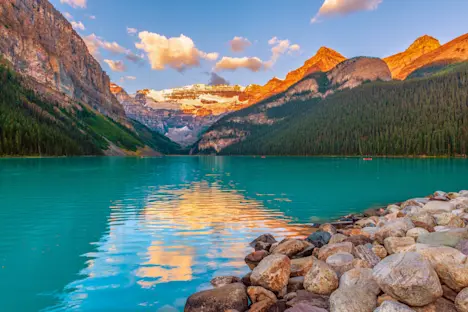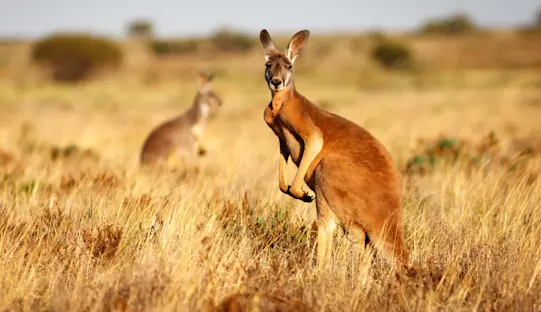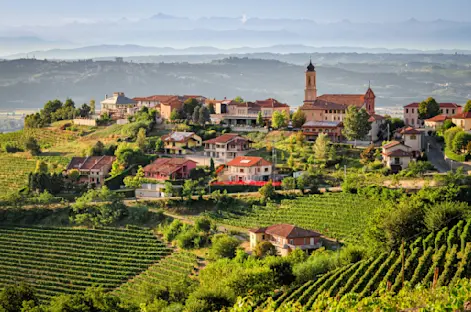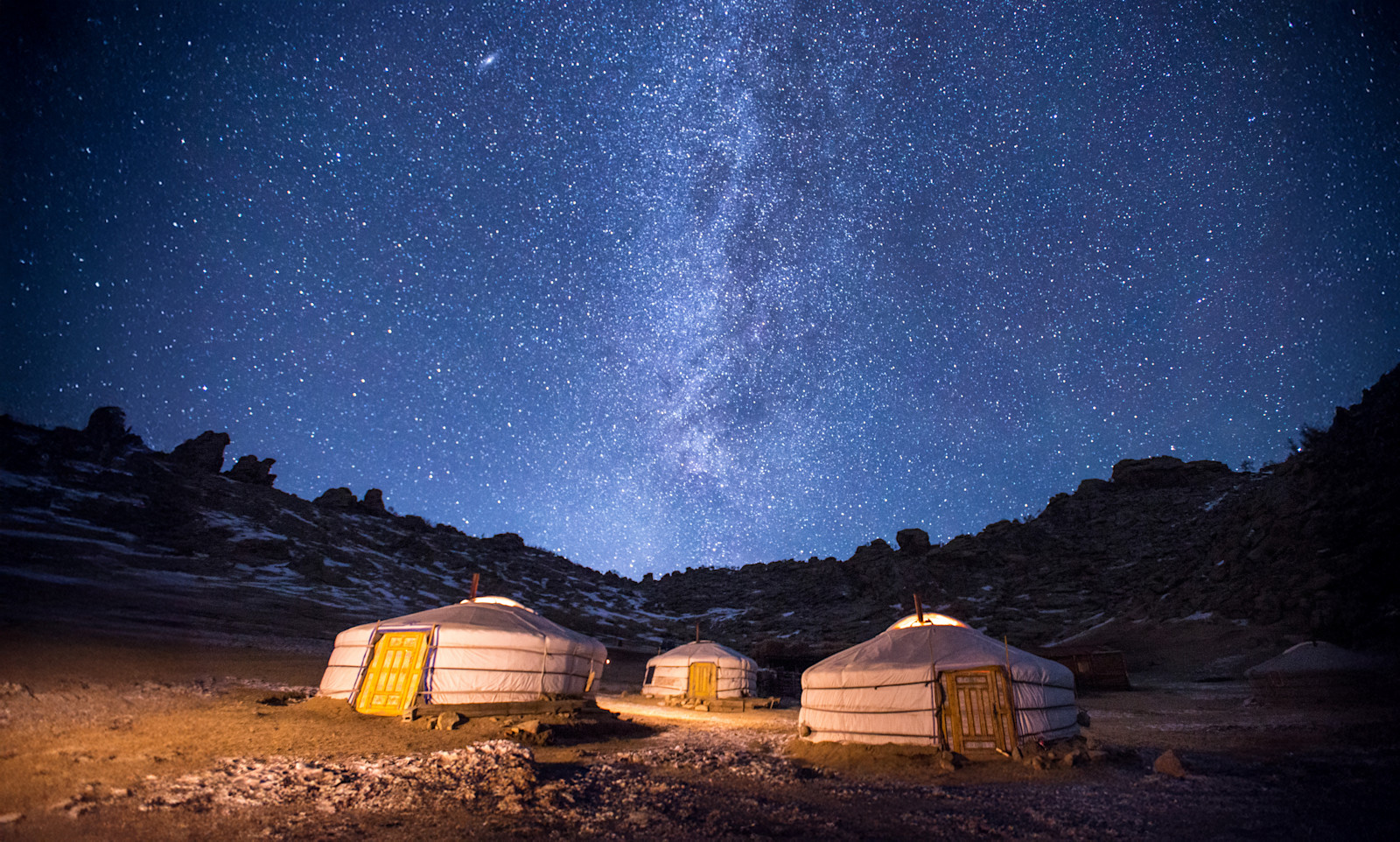Few places deliver such dramatic contrasts in a single journey as Mongolia. From the vast openness of the steppe, where wild horses graze beneath endless skies, to the stark rock formations of the Gobi and the snowcapped peaks of the Altai, Mongolia is a land of shifting horizons. For travelers who crave variety, Nat Hab’s Untamed Mongolia adventure reveals changing light, diverse cultures and rare wildlife across three defining biomes in a single itinerary.
On this Nat Hab expedition, private chartered flights carry you swiftly across immense distances, maximizing time in nature. Along the way, meet Mongol herders on the steppe, discover traditional archery in the Altai, and visit Kazakh families whose nomadic traditions have endured for centuries.
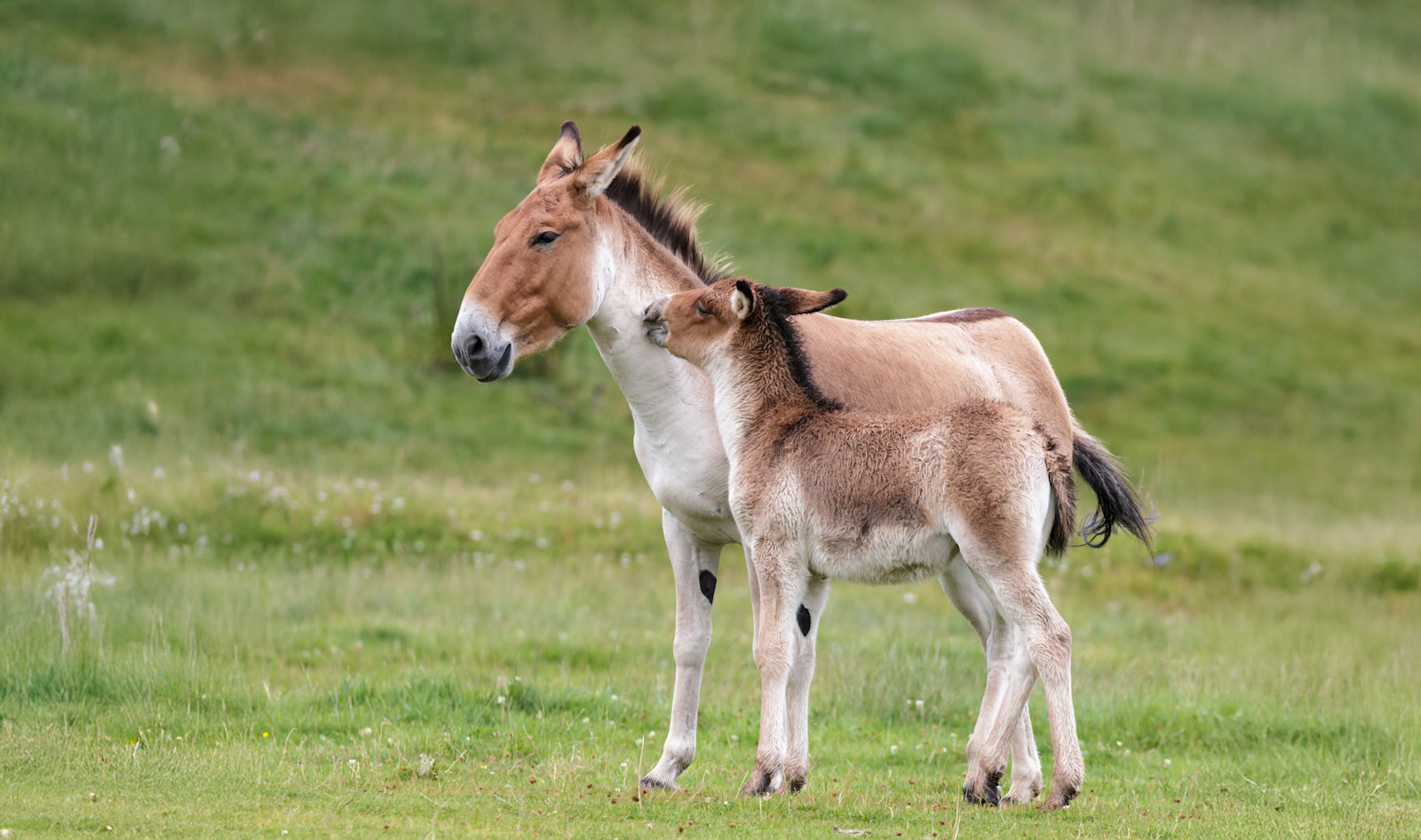
Takhi horses, Hustai National Park, Mongolia
What Makes Mongolia’s Landscapes Unique?
Mongolia is a land of extremes. Its 604,000 square miles hold deserts that freeze in winter, alpine peaks that remain snowcapped through summer, and vast grasslands that support one of the planet’s great mammal migrations.
Each of Mongolia’s biomes tells a different story:
- On the steppe, the last true wild horses—Przewalski’s horses—graze alongside large herds of gazelles.
- The desert reveals granite cliffs and crimson rock, home to argali sheep, Siberian ibex and cinereous vultures.
- The Altai Mountains rise in sharp contrast, with snowcapped peaks where tribal archers demonstrate centuries-old Uriankhai techniques.
In one journey, you move from steppe to desert to mountains, witnessing contrasts and cultures that define Mongolia.
Steppe: What Grows on Mongolia’s Grassland?
Grassland steppe covers about 332,000 square miles—55% of Mongolia—and is considered the last remaining pristine grassland in Eurasia.
The steppe is home to:
- An estimated 2 million Mongolian gazelles, whose annual migration is one of the last large-scale migrations in the northern hemisphere
- 5,000 critically endangered saiga antelopes, making a comeback in neighboring Kazakhstan
- Przewalski’s horse, Mongolia’s national animal, reintroduced to the steppes and a symbol of the country’s wild heritage
- The elusive Pallas’s cat, stronghold populations in the Eastern Steppe
- About 180 recorded bird species, both migratory and native
- More than 20,000 herding families, raising diverse livestock as their primary livelihood
At Hustai National Park, Nat Hab guests enjoy exclusive permission for a private 360° mobile ger camp on the edge of the Core Zone, normally closed to tourists. From this base, wildlife drives reach research areas typically off-limits, timed for optimum viewing. Expect intimate encounters with Przewalski’s horses, plus chances to see Mongolian wolves, red deer and steppe raptors. Nights are illuminated by the Milky Way, unbroken by city glow.
Discovering the Desert: Ikh Nart Nature Reserve
Established in 1996, Ikh Nart Nature Reserve spans about 257 square miles on the Gobi’s northern edge, where steppe meets semi-desert. Rocky outcrops, shrublands and canyons see temperatures from –40°F in winter to 109°F in summer.
About 110 pastoral families live with their livestock, migrating seasonally within the reserve. For wildlife, Ikh Nart is crucial habitat for:
- more than 1,000 argali sheep
- hundreds of ospreys, the largest population in Mongolia
- dense populations of cinereous vultures and kestrels
- goitered and Mongolian gazelles
- Siberian ibex
- Mongolian wolves
Once considered a “paper park” without sufficient management, Ikh Nart is now a conservation model. Long-term research and community engagement have boosted argali and ibex by 200–300% and increased cinereous vulture fledging success by about 35%. In 2012, UNDP recognized Ikh Nart as a Model Protected Area.
Guests overnight in a permanent ger camp, watching sunrise paint the granite crimson. Chartered flights in and out keep the focus on exploration, not road time.
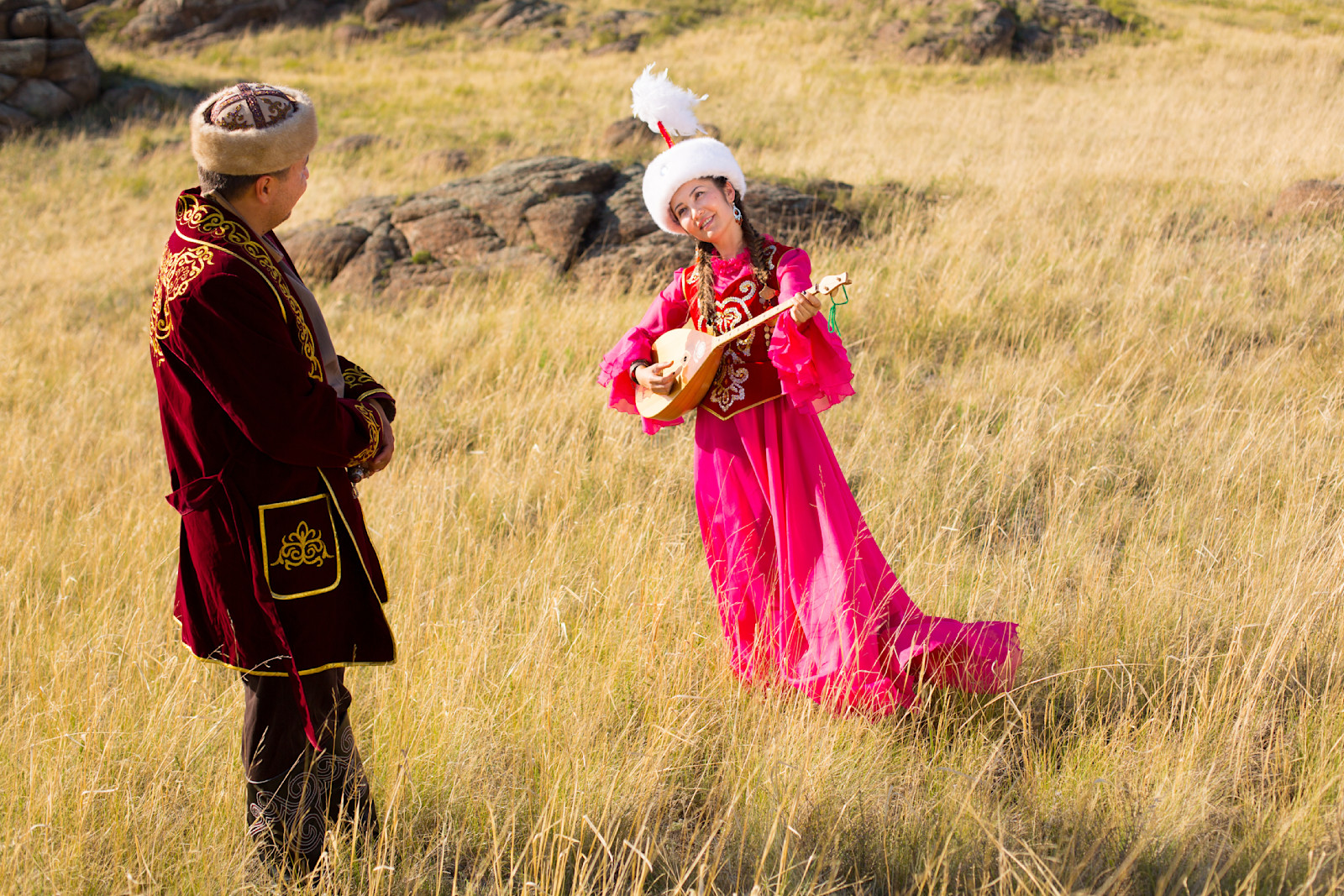
Traditional Kazakh attire, Altai, Mongolia
Moving in Mountains: Traditional Archery & Kazakh Hospitality in the Altai-Sayan Ecoregion
The Altai-Sayan Ecoregion spans the boundary of Siberian taiga and Central Asian desert—a mosaic of snowcapped peaks, alpine valleys and larch forests.
The area features:
- About 159,000 square miles of forestland, roughly 39% of the region
- 3,700 plant species (16% rare or endangered, 9% endemic)
- 650 vertebrate species, including Altai argali, the critically endangered Mongolian saiga and the elusive snow leopard
Despite its harsh climate, the Altai holds:
- 27,000 lakes
- Glaciers storing about 11.8 cubic miles of freshwater
- The Ob and Yenisei Rivers, two of the world’s largest watersheds
In the high country, travelers encounter cultural traditions shaped by the mountains. Witness a traditional archery demonstration, discovering ancient Uriankhai techniques as tribal archers display remarkable precision and strength.
Later, visit a neighboring Kazakh family. Kazakhs live mostly in Bayan-Ulgii province, many having migrated from Xinjiang in the early 20th century to escape civil war, with a second wave resettling in the 1940s. Today, more than 120,000 Kazakhs live in Mongolia, maintaining a nomadic lifestyle that has endured for centuries.
We are welcomed into the family’s traditional Kazakh ger, distinctive in its design from Mongolian gers and warmed by a wood-burning stove. Our hosts offer airag (fermented mare’s milk tea) and hand-made curd products. Inside, colorful felt carpets cover the floor and intricately stitched tapestries adorn the walls, each embroidery pattern unique to the family. Learn about their herding practices and cultural traditions, then return to camp by late afternoon for dinner and, weather permitting, a stargazing session with our Expedition Leader—the Altai’s night skies are among the darkest on Earth.
How Do Mongolia’s Nomadic Cultures Reflect the Land?
Mongolia’s cultural diversity mirrors its geography.
- On the steppe, Mongol herders live closely with horses and mixed herds of sheep, cashmere goats, cattle/yaks and Bactrian camels toward the Gobi. Their way of life is shaped by endless horizons and abundant grazing.
- In the Altai, Kazakh families herd livestock and practice skills such as archery, embroidery and feltwork. Their gers are decorated with colorful textiles, each design unique to a family.
Together, these traditions illustrate how human adaptation is inseparable from land and climate. For travelers, these encounters bring human texture to Mongolia’s wild landscapes.
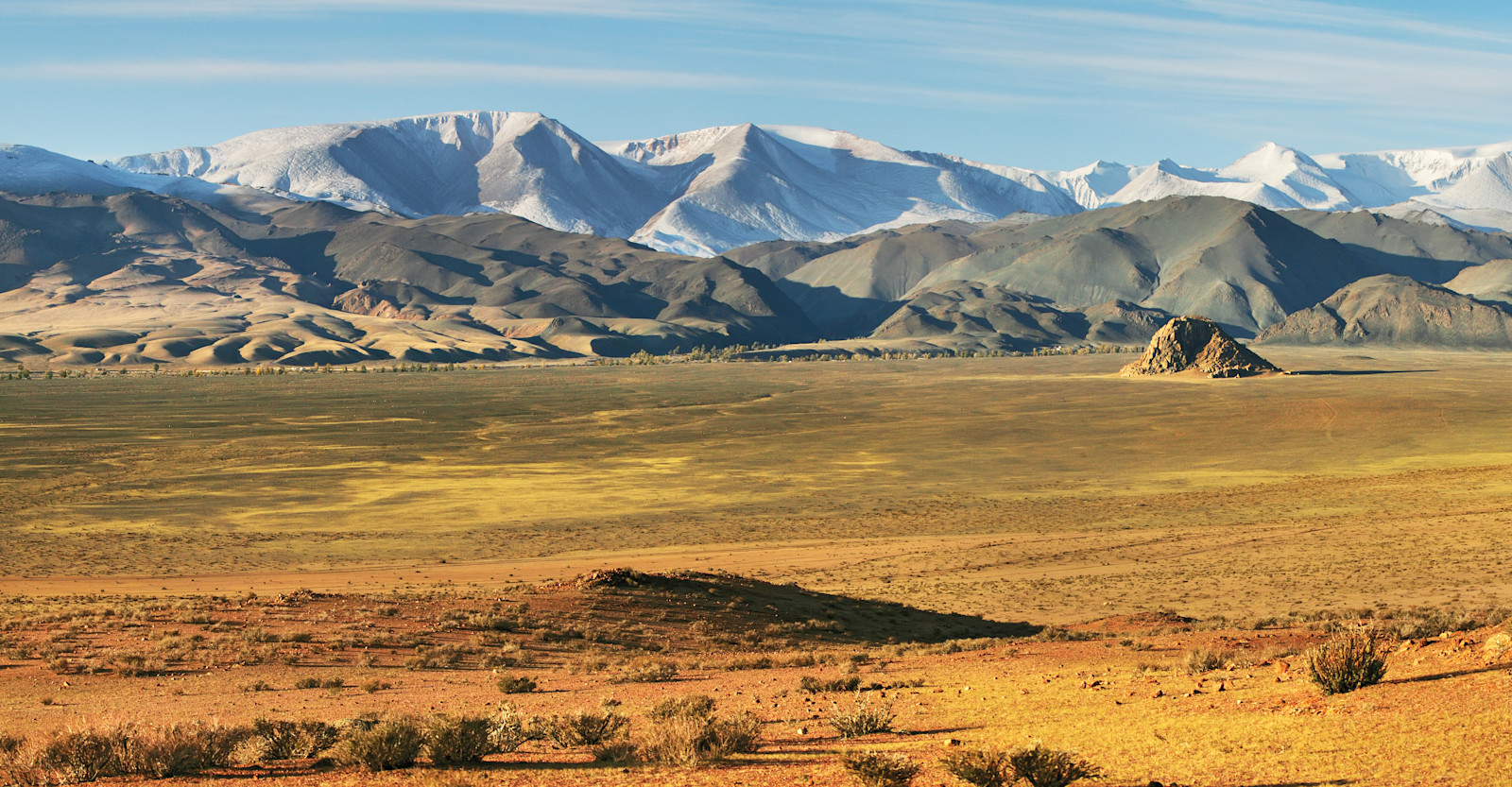
Mongolia Travel FAQs
What is the best way to explore Mongolia’s vast landscapes?
Most Mongolia itineraries involve long, rough drives. Nat Hab eliminates this with private chartered flights, carrying guests directly to Ikh Nart and onward between regions. You spend your days on wildlife drives and cultural visits, not in transit, and gain a striking bird’s-eye view of grasslands, desert ridges and glaciated peaks.
Where do travelers stay on Nat Hab’s journey?
Three distinctive ger experiences anchor the route:
- A private 360° mobile ger camp in Hustai, with exclusive permission to camp near the Core Zone
- A permanent ger camp in Ikh Nart, surrounded by granite outcrops and canyons
- A luxury ger camp in the Altai, where tribal archers demonstrate ancient skills and Kazakh families welcome us into their homes
Each camp blends cultural authenticity with modern comfort and small-group intimacy.
What is a ger?
A ger is a traditional Mongolian yurt. White and round, it is built with a wooden frame, supporting columns and layers of felt that provide insulation in extreme temperatures. Nat Hab travelers are welcomed into gers, sharing meals and daily rhythms.
What wildlife can I expect to see?
The itinerary targets optimum viewing in each biome:
- Hustai National Park: Przewalski’s horse, Mongolian wolf, red deer
- Ikh Nart Nature Reserve: argali sheep, Siberian ibex, cinereous vultures
- Altai-Sayan Ecoregion: Altai argali, Mongolian saiga, golden eagles and the rarely seen snow leopard






